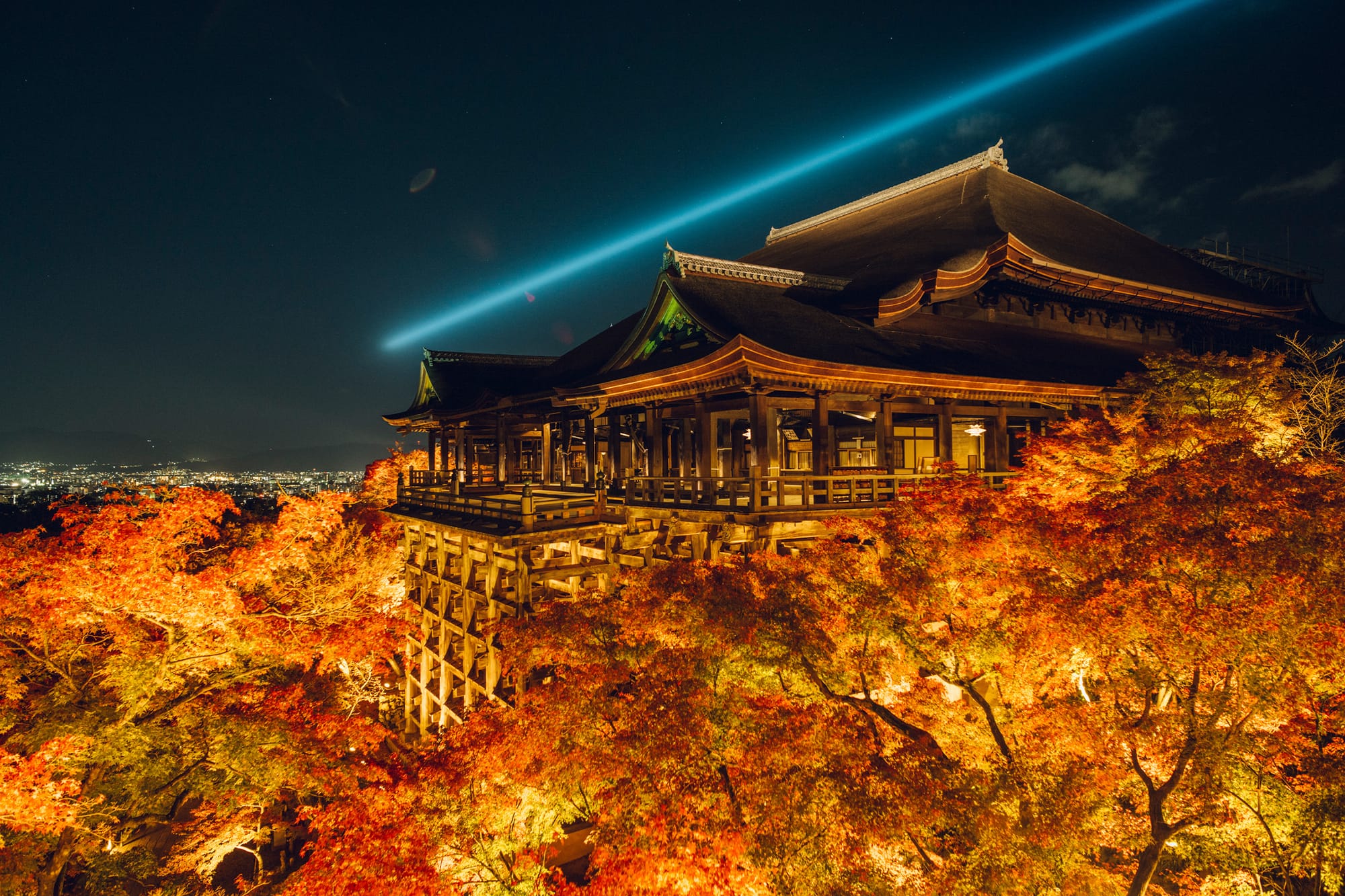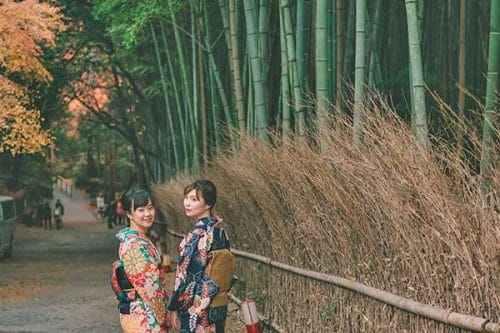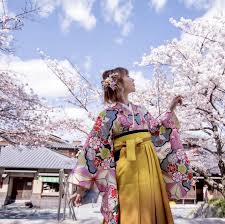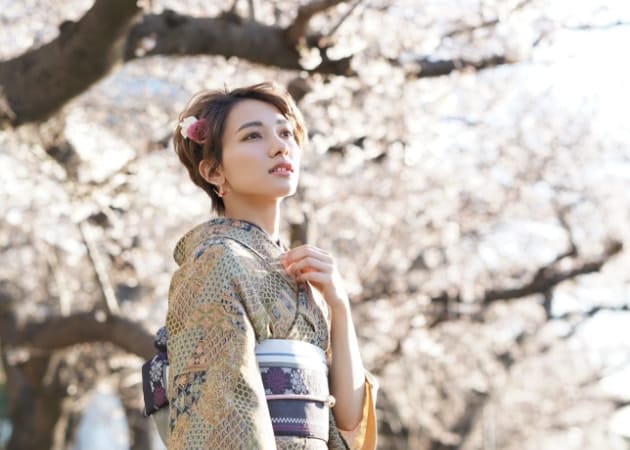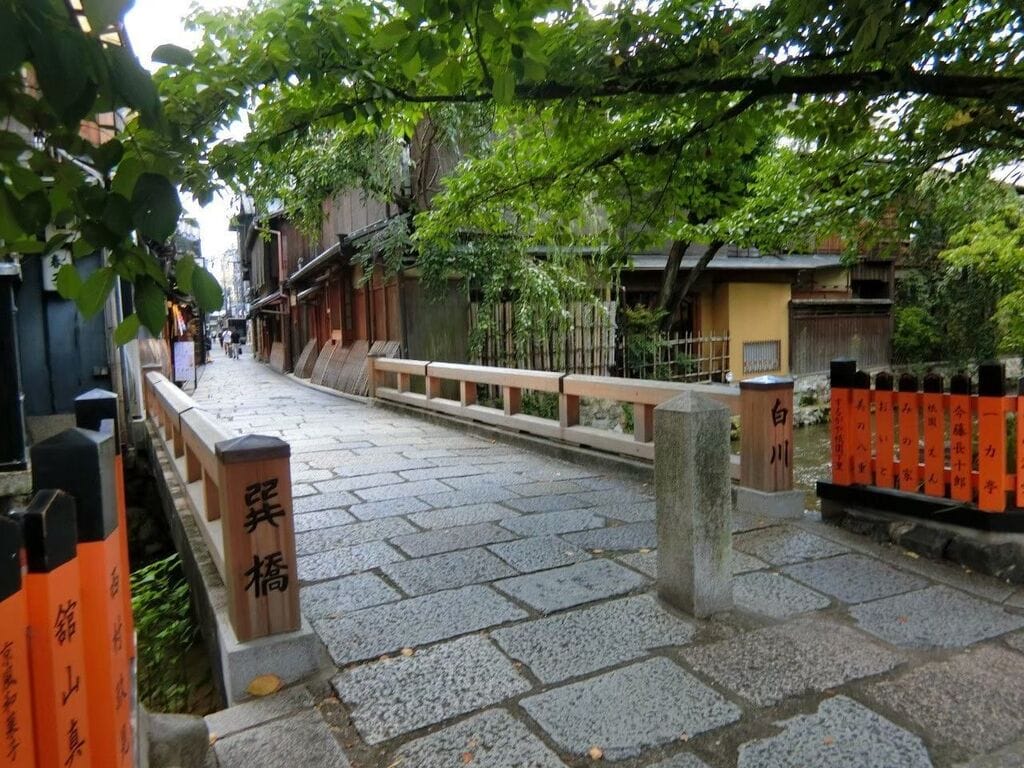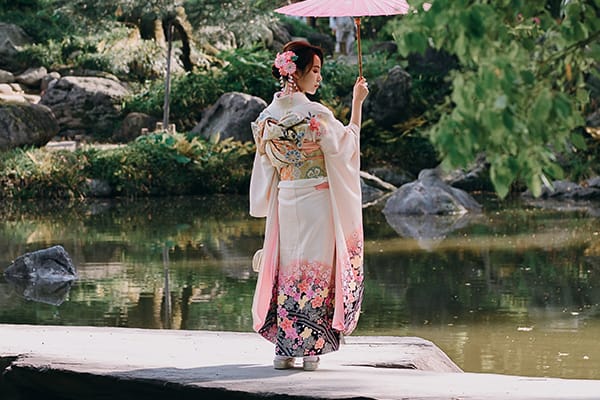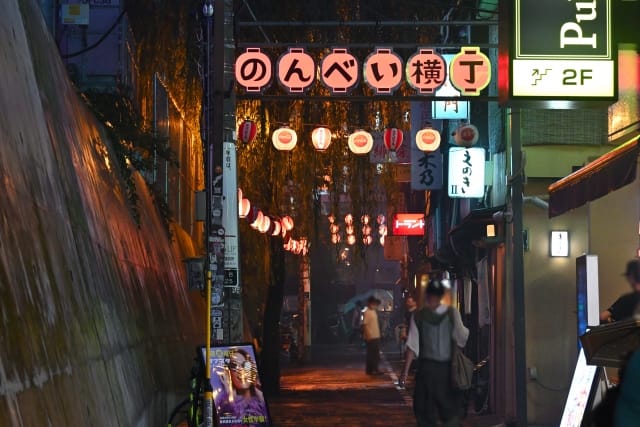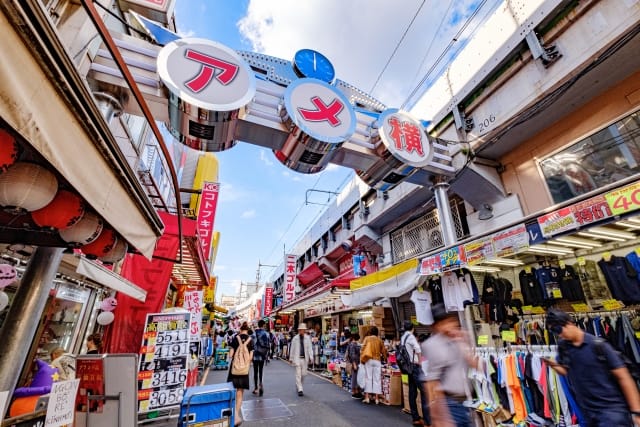Best Sightseeing Spots for Kimono Photography & Rental Shops
Kyoto is a popular tourist destination visited by many people throughout the year. In 794, a capital called "Heian-kyo" was established and became the capital of Japan. It developed through emperor-centered politics until 1869 when the capital moved to Tokyo.
One of Kyoto's characteristics is the abundance of buildings symbolizing Japanese history and culture, such as shrines and temples. The "elegant" Japanese-style scenery that can be felt throughout the city offers many spots that are perfect for kimono photography. There are also many kimono rental shops nearby, and many people make kimono photography the purpose of their trip.
This time, we'll introduce recommended photo spots for kimono sightseeing and nearby shops where you can easily rent kimonos!
I visited Kyoto several times between August and October 2024. I'm updating this article to share the new charms of Kyoto I discovered and to recommend the latest spots worth visiting. In this update, I've also included the newest information about Kyoto for 2025.
Another reason for this update is the growing interest in tours that allow visitors to fully experience Kyoto's traditions and culture.
Due to Kyoto's deep history and traditions, first-time visitors often find it challenging to explore the city efficiently while gaining a deeper understanding. This has led to increasing popularity of guided tours like those offered by Magical Trip, where local guides help tourists navigate the city.
Notably, Magical Trip's tour, which was ranked No.1 among all tours on Tripadvisor in 2024, is experiencing high demand in 2025.

For those interested in Kyoto's traditions and culture, we recommend the following tours where you can experience authentic Kyoto tea ceremonies and Zen meditation:
• Kyoto Tea Ceremony & Kiyomizu-dera Temple Walking Tour
• Kyoto Zen Meditation & Garden Tour at a Zen Temple, including a traditional vegetarian lunch
If you love visiting shrines and temples, try the "Fushimi Inari Hidden Hiking Tour" to discover the hidden charms of Fushimi Inari Shrine.
Whichever tour you choose, it's sure to be an unforgettable experience!
Kyoto: A historic city with well-preserved traditional streetscapes
In Kyoto, you can enjoy various natural sceneries, including waterfront views like the Kamogawa River and gentle mountain ranges. Another attraction is the abundance of historical buildings, such as World Heritage-designated shrines, temples, and castles.
Kyoto's streets feature traditional wooden buildings called "machiya," which serve as both stores and residences. These line the streets, and due to their long, narrow shape, they are affectionately known as "eel beds."
The scenery of streets lined with "machiya" exudes a Japanese elegant atmosphere and traditional charm, making it popular among tourists and foreigners for kimono sightseeing.
Kimono: The most famous among traditional Japanese clothing
Kimono is a traditional Japanese garment. Colorful and beautiful kimonos are popular overseas as part of Japanese traditional culture.
In the past, the color, material, and design of kimonos indicated social status. Even today, colors and designs are chosen based on the occasion and purpose, such as weddings, children's celebrations, coming-of-age ceremonies, and funerals.
"Wafuku" is a general term for Japanese clothing, including kimonos. It also includes casual summer yukata and men's indoor wear called jinbei.
If you are interested in Kyoto's Traditional Crafts, check the article below! I summarized them I recommend and how I felt each Crafts.

6 Kyoto tourist spots perfect for kimono sightseeing & recommended rental shops
Fushimi Inari Shrine

Fushimi Inari Shrine (Fushimi-inari-taisha), with a history older than Heian-kyo, is affectionately known as "Oinarisan." The main attraction of Fushimi Inari Shrine is the "Senbon Torii" (thousand torii gates). The tunnel of closely packed, vivid vermilion torii gates creates a fantastical atmosphere as if you've wandered into another world. Currently, there are about 10,000 torii gates on the grounds, making it a recommended spot for kimono sightseeing and photography.
As you walk around the grounds, you'll encounter fox statues in various places. Foxes are considered messengers of the Inari shrine deity. Be sure to take photos of the foxes in their various poses.
Near Fushimi Inari Shrine, we recommend trying the local delicacy "Inari sushi," which is sushi rice and ingredients like burdock root stuffed into sweet and savory deep-fried tofu pouches. When visiting Fushimi Inari, be sure to enjoy this treat as well!
Access: 5-minute walk from Fushimi Inari Station on the Keihan Main Line / Immediately accessible from Inari Station on the JR Nara Line
Phone: 075-641-7331
Visiting hours: 24 hours
Admission fee: Free
Closed: Never
Official website
Kyoto Kimono Rental Fushimi Inari Store [Aiwafuku]
source:Official Facebook
"Aiwafuku" is a kimono rental shop right in front of Fushimi Inari Station. Its accessibility, being a 5-minute walk from Fushimi Inari Shrine, makes it popular among tourists for kimono sightseeing.
Dressing time, including hairstyling, takes about 1 hour. They offer various plans, including couple rentals and professional photographer services.
Please make a reservation through the official website form by the day before!
Access: Immediately accessible from Fushimi Inari Station on the Keihan Main Line
Phone: 075-748-7117
Hours: 9:00-18:00
Closed: Irregular
Official website
If you are interested in Fushimi Area, check the article below! I summarized how and where you can enjoy Fushimi as much as possible.

Kiyomizu Temple
source:Official website
At Kiyomizu Temple (Kiyomizu-dera), a World Heritage site, you can see many important cultural properties.
The main attraction is undoubtedly the "Kiyomizu Stage." From this stage, which juts out from the temple's main hall (a national treasure) onto the mountainside, you can view the cityscape of Kyoto. There's a Japanese saying, "jumping off the stage at Kiyomizu," which means "to make a bold decision or action."
While the view from the Kiyomizu Stage is beautiful in every season, my recommendation is autumn when you can enjoy the fall foliage. In autumn, kimonos in deep red, dark green, or purple colors match well with the scenery.
The charm of Kiyomizu Temple is that you can experience seasonal nature throughout the grounds. Choose a kimono that matches the season, whether it's cherry blossoms in spring or snowy landscapes in winter, for beautiful kimono sightseeing photos!
Access: 10-minute walk from Gojo-zaka bus stop (take a bus from JR Kyoto Station) / 25-minute walk from Kiyomizu-Gojo Station on the Keihan Electric Railway
Phone: 075-551-1234
Opening/Closing hours: 6:00-18:00 (until 21:30 depending on the season)
Admission fee: Adults & High school students 400 yen / Junior high & Elementary school students 200 yen
Closed: Never
Official website
Yumeyakata Gojo Store
source:Official website
"Yumeyakata Gojo Store," a 3-minute walk from Gojo Station on the subway, offers a wide variety of rental plans, including seasonal kimonos and plans with chic designs. With over 300 kimonos always available, you'll be spoiled for choice! The time spent choosing is sure to be enjoyable.
There's a bus stop in front of the store, and it's conveniently about 10 minutes by bus to Kiyomizu Temple, perfect for kimono sightseeing.
Access: 3-minute walk from Gojo Station on the Kyoto City Subway
Phone: 075-354-8515
Hours: 10:00-17:30 (Last entry 16:00)
Closed: 12/31-1/3
Official website
If you are interested in Kiyomizu Dera Temple, check the article below! I summarized how and where you can enjoy it as much as possible.

Yasaka Shrine
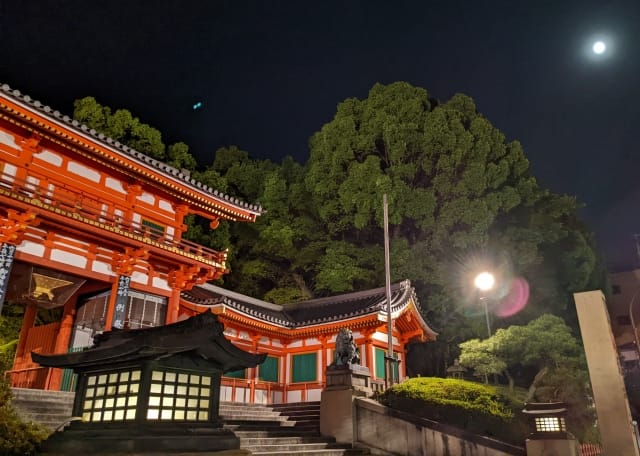
Yasaka Shrine is located in Gion, a popular tourist area with a traditional atmosphere. It's famous for the "Gion Festival," one of Japan's three major festivals, and is crowded with tourists in July when the festival takes place.
A recommended spot for kimono sightseeing photography is the "West Tower Gate" (Nishi-romon), an important cultural property. The West Tower Gate, the oldest structure on the shrine grounds, is located at the end of Gion's main street and serves as a symbol of Yasaka Shrine.
When I visited at night, the beautiful vermilion gate was vividly illuminated, creating a magical atmosphere. The "Man-touro" (ten thousand lanterns), about 100 lanterns built along the shrine's path, are also lit up at night, adding color to your kimono stroll.
Location: 5-minute walk from Gion-Shijo Station on the Keihan Electric Railway
Phone: 075-561-6155
Hours: Open for worship 24 hours (Office 9:00-17:00)
Admission fee: Free
Closed: Never
Official website
If you are interested in Yasaka Jinja Shrine, check the article below! I summarized in more details and how I felt there.

Yasaka Koshindo: Charming with colorful kukuri-zaru
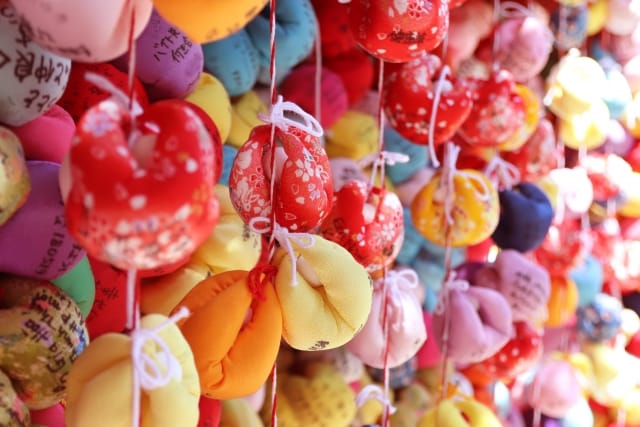
Yasaka Koshindo, a 7-8 minute walk from Yasaka Shrine, is a popular photogenic spot for kimono sightseeing. Its official name is "Daikoku-san Kongo-ji Koshindo."
The main attraction at Koshindo is the colorful amulets called "kukuri-zaru" hanging in the main hall and other areas. Many people take photos in kimono or yukata with these vibrant ball-like kukuri-zaru as a backdrop. Choosing a simple white kimono to contrast with the colorful background might be a good idea!
Access: 6-minute walk from Higashiyama-Yasui bus stop (Take the "Higashiyama-dori Kitaoji Bus Terminal bound" bus from JR Kyoto Station)
Phone: 075-541-2565
Visiting hours: 9:00-17:00
Official Instagram
Domestic Rental Kimono Wakana
source:Official website
"Wakana" is conveniently located just a 1-minute walk from Yasaka Shrine and a 7-minute walk from Yasaka Koshindo, perfect for kimono sightseeing. A nice point is that high-quality domestic kimonos come with all accessories, including hair ornaments.
Same-day reservations are possible if there's availability, and you can store large luggage like suitcases for free. For an additional 1000 yen on top of the basic fee, you can rent until the next day, making it ideal for evening strolls around the illuminated Yasaka Shrine!
Access: 7-minute walk from Gion-Shijo Station on the Keihan Electric Railway
Phone: 075-532-0707
Hours: 9:00-18:00
Closed: Irregular
Official website
Arashiyama Bamboo Grove
The "Bamboo Grove" in Arashiyama is another recommended spot for kimono sightseeing photography. Tall bamboo lines both sides of the 400-meter-long walkway, seeming to stretch towards the sky. Surrounded by bamboo, the quiet space has a mystical atmosphere with a sense of crisp air.
While there's various beauty in each season, such as autumn foliage and winter snow scenes, my favorite is the vibrant green bamboo grove seen from spring to summer. Try taking photos in spring-like pink kimonos or cool summer yukatas to enjoy the color contrast!
Access: 8-minute walk from Arashiyama Station on the Keifuku Electric Railroad / 10-minute walk from JR Saga-Arashiyama Station
Admission fee: Free
Kyoto City Tourism Association Official Website
Don't miss "Kimono Forest" when visiting Arashiyama!
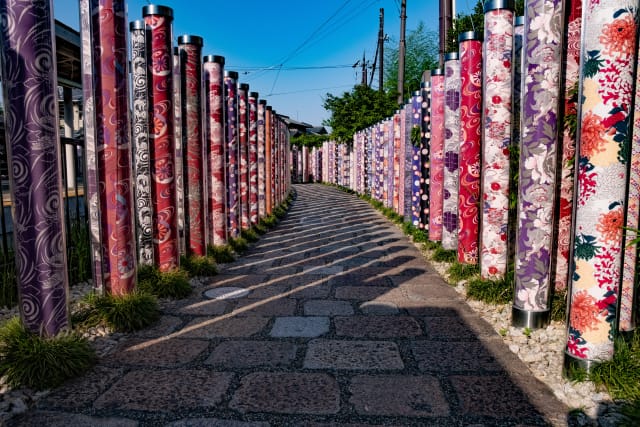
"Kimono Forest" has become a popular photo spot in Arashiyama for kimono sightseeing. It features about 2-meter-high acrylic poles decorated with Kyo-yuzen, a traditional Kyoto dyeing technique, resembling trees. Around 600 poles line the area around Arashiyama Station, creating a "forest of kimonos."
From evening onwards, each pole is illuminated, offering a different beauty from daytime. Combining Kyoto's traditional crafts with modern art, plus the spice of wearing a kimono, you can take unique Kyoto-style photos.
Access: Right at Arashiyama Station on the Keifuku Electric Railroad
Viewing hours: All day (Illumination from evening)
Closed: Never
Viewing fee: Free
Kyoto Kimono Rental & Yukata Rental Kyoetsu
source:Official website
"Kyoetsu," located right next to Arashiyama Station, has over 30,000 kimonos ranging from standard patterns to unique designs, perfect for kimono sightseeing. With a wide variety of accessories like obi decorations, you can enjoy creating your own unique kimono combination.
Experienced staff will dress you in a way that prevents the kimono from coming loose and ensures comfort, so even foreigners unfamiliar with kimonos can enjoy sightseeing worry-free!
Access: Right next to Arashiyama Station on the Keifuku Electric Railroad
Phone: 075-873-0255
Hours: 9:00-18:30
Closed: Never
Official website
If you are interested in Arashiyama Area, check the article below! I summarized how and where you can enjoy Arashiyama as much as possible.
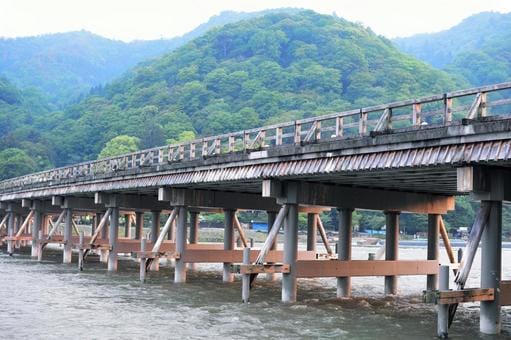
Tatsumi Bridge & Hanami-koji Street
Source:RECOTRIP
Hanami-koji Street, a 5-minute walk from Gion-Shijo Station, is the main street of Gion lined with traditional machiya houses and high-class restaurants. Strolling along the atmospheric stone-paved road in a kimono allows you to enjoy sightseeing as if you were a geisha.
Tatsumi Bridge, a small bridge spanning the Shirakawa River flowing through Hanami-koji, is also recommended as a photo spot for kimono sightseeing. The traditional Kyoto-style Tatsumi Bridge is popular not only as a tourist spot but also as a filming location for dramas.
In spring, the entire Hanami-koji and the area around Tatsumi Bridge become like a tunnel of cherry blossoms, making for even more photogenic scenes. When I visited around noon in early April, it was crowded and difficult to take photos leisurely. During the busy cherry blossom season, visiting in the early morning or after evening might allow for more relaxed kimono photo sessions.
Access: 5-7 minute walk from Gion-Shijo Station on the Keihan Electric Railway
Viewing fee: Free
Hours: Open for strolling anytime
Kimono Rental Miyabi (Kiyomizu Temple Branch)
source:Official website
For kimono rental near Gion, I recommend "Edo Waso Kobo Miyabi." Located a 7-8 minute walk from Gion-Shijo Station, it's convenient for taking photos on Hanami-koji Street and Tatsumi Bridge. They also offer plans with professional photographers, which are popular among foreign tourists for kimono sightseeing.
They don't accept same-day reservations. You can make advance reservations through the official website's reservation form or via Instagram DM.
Access: 8-minute walk from Gion-Shijo Station on the Keihan Electric Railway / 2-minute walk from Higashiyama-Yasui bus stop on Kyoto City Bus
Phone: 075-708-6566
Hours: 9:00-17:00
Official website
Official Instagram
If you are interested in Hanamikoji Area, check the article below! I summarized how and where you can enjoy Hanamikoji as much as possible.

Nanzenji Temple
Source:Souda Kyoto Ikou
Nanzenji Temple, one of the popular tourist spots, offers many attractions including lush natural scenery and historic buildings. Standing in front of the majestic 22-meter-high "Sanmon" gate allows for dynamic kimono sightseeing photos.
My top recommendation is the "Suirokaku," a beautiful red brick aqueduct. This water bridge, built to transport water from Lake Biwa to Kyoto, exudes a retro Western atmosphere.
Going under the bridge, you'll find a fantastical view of multiple arches stretching into the distance. The combination of these nostalgic, fairy tale-like arches and your kimono will create unique photos that can only be taken here.
Access: 10-minute walk from Keage Station on the Subway Tozai Line
Phone: 075-771-0365
Hours: 8:40-17:00 (Until 16:30 in winter)
Admission fee (grounds): Free
Closed: Never
Official website
Don't miss "Keage Incline" during cherry blossom and autumn foliage seasons!
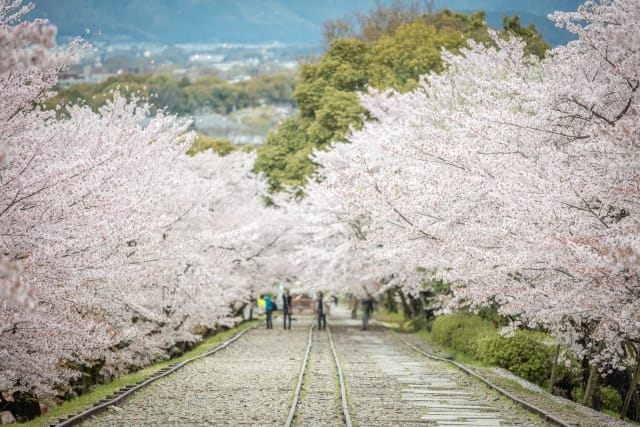
After visiting Nanzenji Temple, stop by the "Keage Incline." This former inclined railway track, used to transport boats on carts, is now open for walking.
Many cherry trees are planted along the tracks, offering a vibrant and magical photo opportunity during full bloom season. In autumn, you can enjoy the red and yellow foliage. I recommend wearing a chic kimono and leisurely strolling on the carpet of fallen leaves for the perfect kimono sightseeing experience.
Access: 3-minute walk from Keage Station on the subway
Open hours: 24 hours
Viewing fee: Free
If you are interested in Keage Incline, check the article below! I summarized in more details and how I felt there.
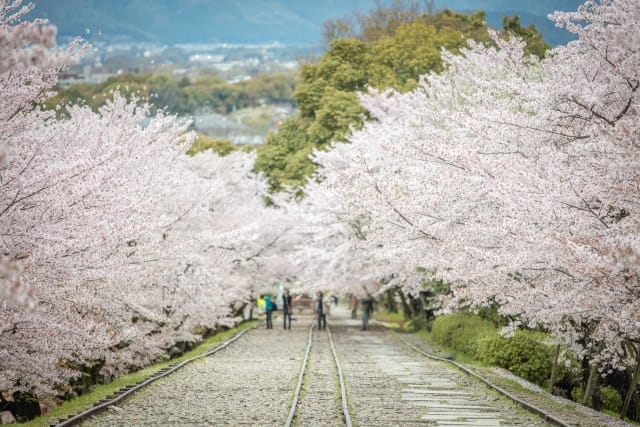
Kyoto Kimono Rental Rika Wafuku
source:Official website
"Rika Wafuku" is a kimono rental shop located a 2-minute walk from Gion-Shijo Station. It's about a 10-minute taxi ride to Nanzenji Temple, making it convenient for kimono sightseeing.
Many of the kimonos at "Rika Wafuku" have casual designs, allowing even foreigners trying kimonos for the first time to enjoy them as easily as Western clothes. Choose from various options like couple plans or hairstyling plans to suit your preferences.
Access: 2-minute walk from Gion-Shijo Station on the Keihan Main Line
Phone: 050-3204-4859
Hours: 9:00-18:00 (Last dressing appointment at 15:30)
Closed: Never
Official website
If you are interested in Kyoto Tours, check the article below! I summarized them I recommend and how I felt each Tours.
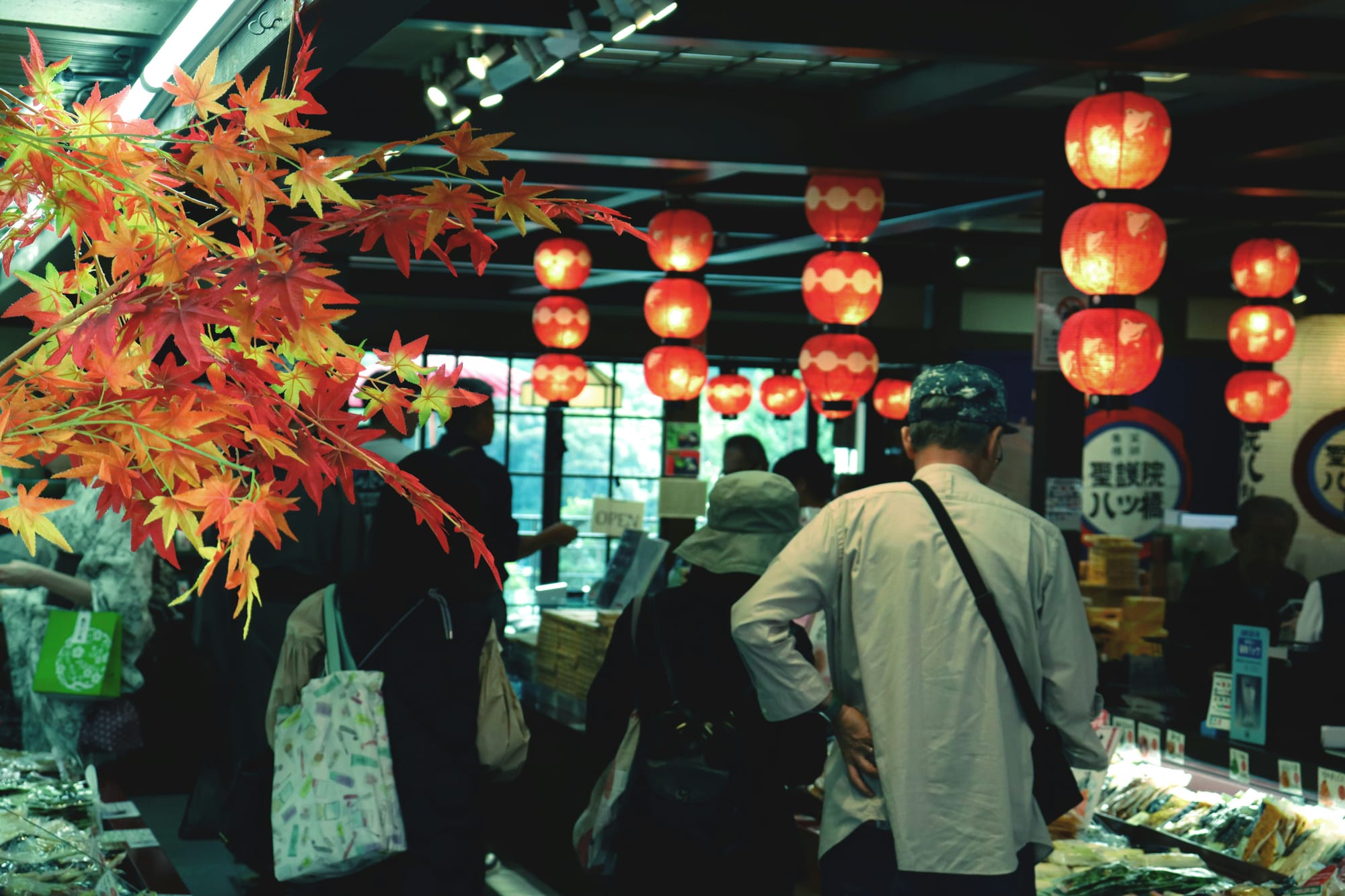

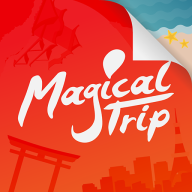
![Kyoto Kimono Rental Fushimi Inari Store [Aiwafuku]](https://res.cloudinary.com/dbm1qiew0/image/upload/blog-images/2024/08/images--16-.jpeg)
